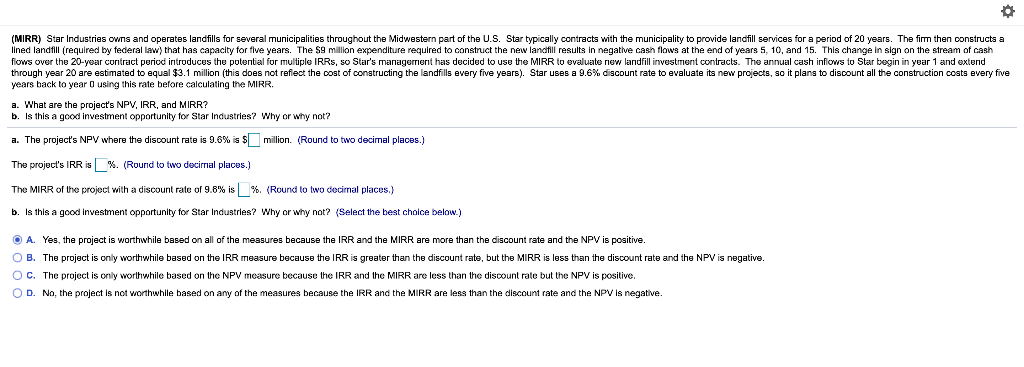Question
Star Industries owns and operates landfills for several municipalities throughout the Midwestern part of the U.S. Star typically contracts with the municipality to provide landfill
Star Industries owns and operates landfills for several municipalities throughout the Midwestern part of the U.S. Star typically contracts with the municipality to provide landfill services for a period of 20 years. The firm then constructs a lined landfill (required by federal law) that has capacity for five years. The $9 million expenditure required to construct the new landfill results in negative cash flows at the end of years 5, 10, and 15. This change in sign on the stream of cash flows over the 20-year contract period introduces the potential for multiple IRRs, so Star's management has decided to use the MIRR to evaluate new landfill investment contracts. The annual cash inflows to Star begin in year 1 and extend through year 20 are estimated to equal$3.1 million (this does not reflect the cost of constructing the landfills every five years). Star uses a 9.6% discount rate to evaluate its new projects, so it plans to discount all the construction costs every five years back to year 0 using this rate before calculating the MIRR.

Step by Step Solution
There are 3 Steps involved in it
Step: 1

Get Instant Access to Expert-Tailored Solutions
See step-by-step solutions with expert insights and AI powered tools for academic success
Step: 2

Step: 3

Ace Your Homework with AI
Get the answers you need in no time with our AI-driven, step-by-step assistance
Get Started


